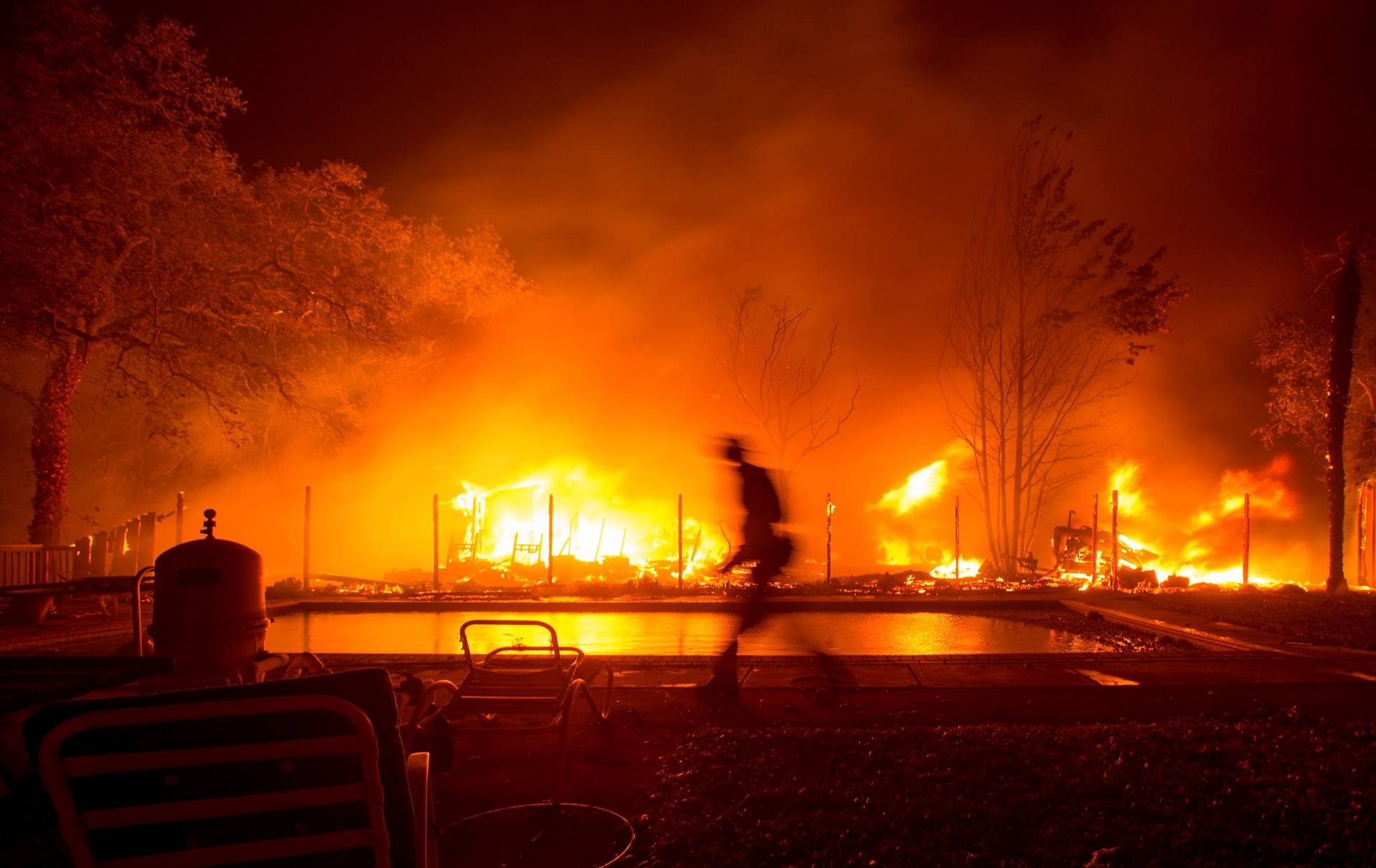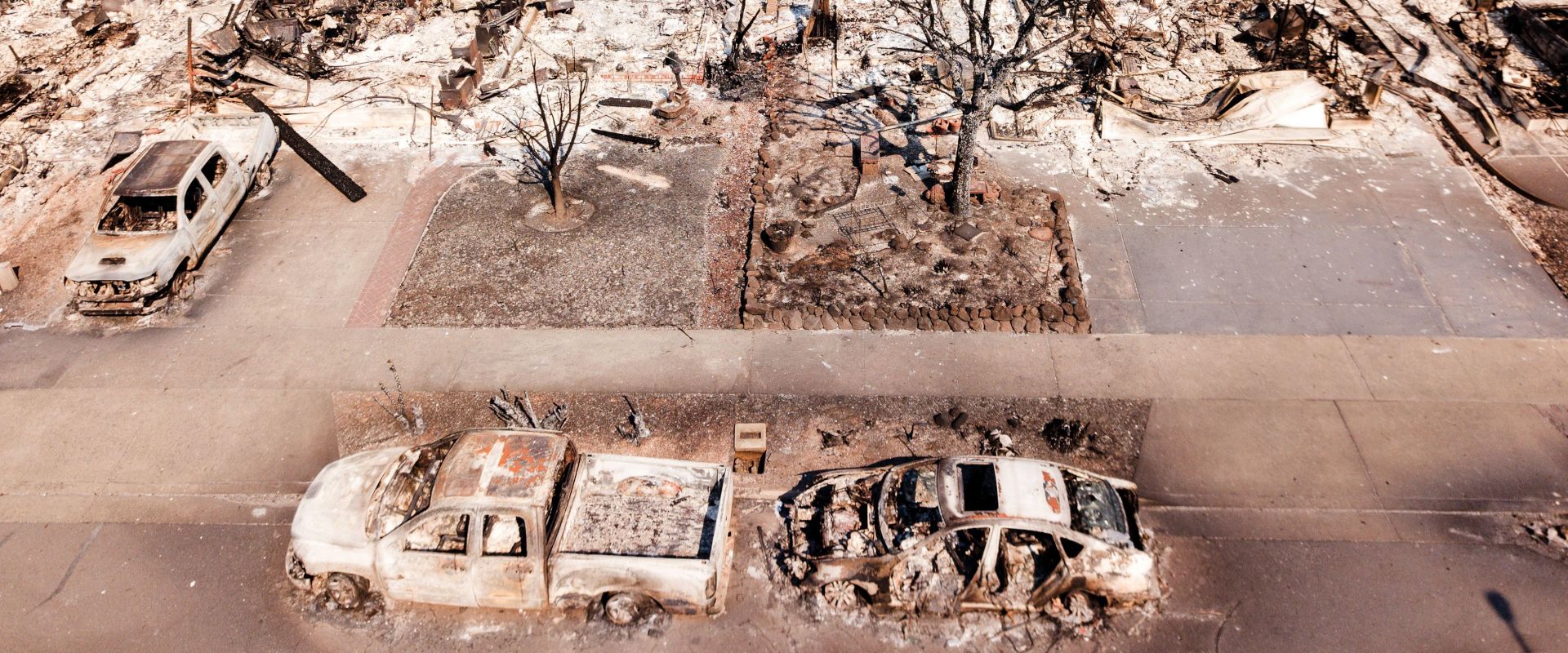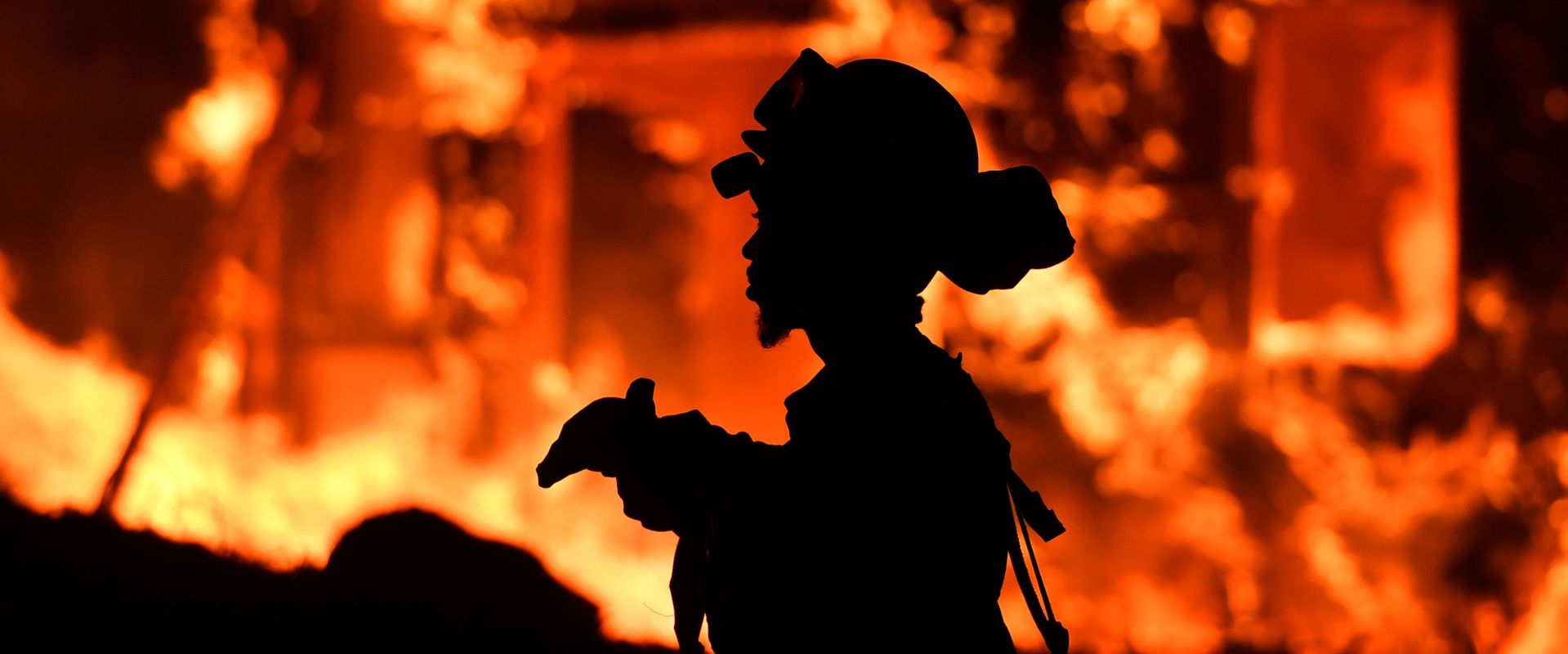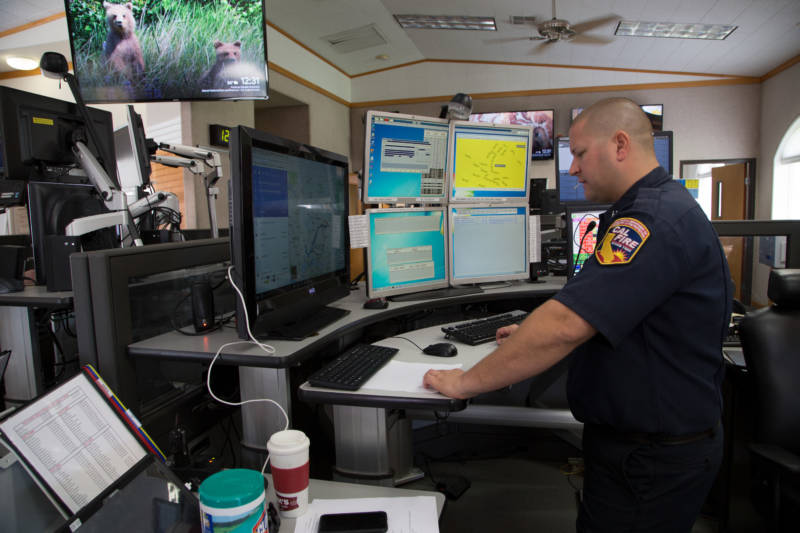A
aron Abbott, who runs Sonoma County’s fire and medical dispatch center, Redcom, acknowledged that authorities were overwhelmed in the early hours of the fire as they fielded hundreds of calls. The Redcom center, where 911 operators are located, was itself impacted by the fires. The dispatch center lost power — causing the room to fill with smoke. Flames burned within a few hundred feet of the building, nearly forcing Abbott to evacuate his staff.
“This was not the wall of fire coming down the mountain like I think a lot of people have this concept in their head,” Abbott said. “What we experienced in the dispatch center were hundreds of disparate fire locations throughout the entire county … and when you have that many fire locations and that many responders being dispatched to disparate locations, it’s going to take some time to understand what the nature of this fire was.”
Firefighters and law enforcement officers also faced logistical challenges as they attempted to save lives and evacuate people: Power lines knocked down by high winds sprawled across roads, blocking access; landlines went dead as the fire chewed through telephone lines; and even mobile phones were rendered useless after the fires took out more than 70 cellphone towers.
Jonathan Cox, a Northern California battalion chief for Cal Fire, said the fire’s speed made it hard to get people out.
“The Tubbs Fire was moving at a football-field-a-minute from the Calistoga side of this area,” Cox said. “It was one of those instances where the disaster was moving faster than literally people could communicate.”
B
ut evacuation procedures also contributed to some of the delays in getting people out of harm’s way. As blazes bore down on Sonoma County homes, Cal Fire wasn’t authorized to order evacuations. Neither were dispatchers. Only law enforcement could tell people they had to leave their homes.
That means in the first hours of the October fire, Cal Fire recommended evacuations to Redcom dispatchers, who then had to get approval from the Sheriff’s Department before they could order people to leave.
“You have a state agency in another county who asked to call us in this county because something going on in their county is now crossing jurisdictional lines and they need the authorities in this county to be able to send the alerts out locally here because they’re not going to have, in another county, the infrastructure or even the capability … or the authority to send an alert in this county,” Redcom’s Abbott said.
Also complicating matters are the different types of alerts that exist and how they are sent out:
- Wireless Emergency Alert, or WEA: When phone companies override private cellphones in a specific geographic area on behalf of government agencies and send you an alert you cannot ignore — for instance, these are commonly used for Amber Alerts
- Reverse 911: When 911 operators call you, often on a landline
- SoCo Alert: An opt-in system that is similar to Reverse 911 that can send alerts to phone lines, emails and texts
- Nixle: An opt-in system that many county agencies, including Sonoma and Napa, use to contact residents via text and email alerts
Even with these various technologies available, many residents in the path of the fire never received a single evacuation notification. Between the time the fires broke out and 2 a.m., Sonoma County officials sent out four alerts through SoCo. The city of Santa Rosa sent out three alerts, but not until 1:53 a.m., after the fire had jumped over Highway 101, a six-lane freeway, and was already in the city’s residential subdivisions.
Sonoma County officials also sent out four alerts about evacuations and the fires through the opt-in system Nixle between 11 p.m. and 2 a.m. That included a Nixle alert sent at 11:03 p.m. warning people to evacuate around Porter Creek and Petrified Forest Road.
Chris Helgren, emergency manager for Sonoma County Fire and Emergency Services, faced questions about his decision not to send wireless emergency alerts even as the Tubbs Fire still burned.
“I think that our decisions saved lives,” he said. “And I can’t imagine having a wider alert for people that were not in the immediate danger area. I can’t imagine what that would have added to the already overly congested situation, where literally the roads were locked and there was no movement.”
Sonoma County Sheriff Robert Giordano declined KQED’s request for an interview.
“It has been well documented that we had 29 deputies on duty when the fire broke out and over 170 deputies responded within the first 12 hours,” sheriff’s spokesman Spencer Crum wrote in an email. “We went door to door notifying residents of the fire, along with sending Nixles and a SoCo Alert reverse 911 call to residents to evacuate. At this time we are focused on rebuilding our community here in Sonoma County.”




